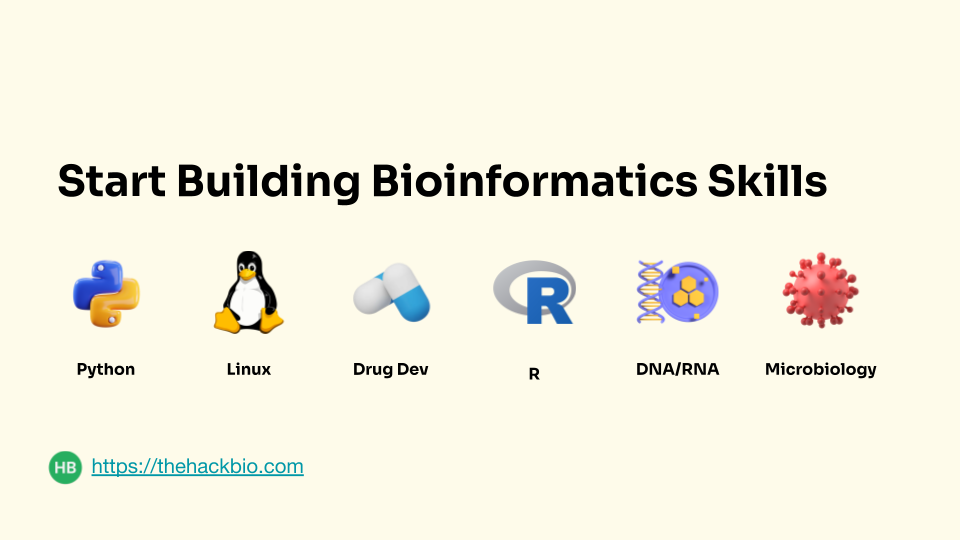Bioinformatics 101: Understanding the Basics

If you’re just getting into bioinformatics, it can be quite overwhelming. A good way to start is by understanding the basics, then go up from there.
This article gives a detailed explanation of bioinformatics basics, its history, research areas and important concepts and terms you should know.
What’s bioinformatics?
Bioinformatics is a rapidly growing field that combines biology, computer science, and information technology (bioinformatics softwares & tools) to analyze and interpret biological data.
You should keep in mind that the goal of bioinformatics is to extract meaningful information from the vast amounts of data generated by biological research, such as genetic sequences, protein structures, and metabolic pathways.
Brief history of Bioinformatics
The history of bioinformatics can be traced back to the 1960s and 1970s, when scientists first began using computers to store and analyze biological data.
However, it wasn’t until the 1990s, with the advent of new technologies such as DNA sequencing and high-throughput data generation, that bioinformatics truly came into its own as a field.
Subfields or research areas under bioinformatics
Bioinformatics encompasses a wide range of subfields or research areas, including:
- Sequence analysis: This involves the study of genetic and protein sequences to understand the structure and function of genes, proteins, and other biomolecules.
- Genomics: This involves the study of the entire genome of an organism, including its DNA sequence, gene organization, and regulation.
- Transcriptomics: the study of an organism’s entire transcript (or RNA) and their role in regulating the genome. Learn about analyzing RNA-Seq datasets here
- Proteomics: This involves the study of proteins expressed within a cell/tissue and their functions within an organism.
- Systems biology: This involves the study of the interactions and connections between different biological systems, such as how genes and proteins interact to control cellular processes.
- Drug discovery and development: This involves the use of bioinformatics tools to identify new drug targets, design and optimize drug molecules for specific targets. Learn to search for and discover new drugs and drug targets here
- Phylogenetics: this area involves the study of the evolutionary relationships between biological entities. Learn about phylogenetics and its applications here.
- Structural Bioinformatics: the study, analysis and prediction of the 3-dimensional structure of biomolecules.
Concepts and terms you need to know in bioinformatics
In order to understand and work in bioinformatics, it is important to have a grasp of the following concepts and terms:
- DNA and RNA: These are the genetic molecules that carry the instructions for the development, function, and reproduction of all living organisms. Learn about DNA, RNA and proteins and their role in molecular biology here
- Genes: These are the segments of DNA that carry the instructions for making proteins.
- Proteins: These are large, complex molecules that perform a wide range of functions in the body, such as catalyzing metabolic reactions, replicating DNA, responding to stimuli, and transporting molecules across cell membranes.
- Alignments: This is the process of comparing two or more sequences to find similarities and differences.
- BLAST: This is a popular sequence alignment tool that is used to search for similar sequences in databases.
- Genome assembly: This is the process of piecing together the complete DNA sequence of an organism from smaller, overlapping fragments.
- Genome annotation: This is the process of identifying and describing the features of a genome, such as genes, regulatory regions, and repeats.
- Machine learning: This is a type of artificial intelligence that involves training computer algorithms to learn from data and make predictions.
In conclusion, bioinformatics is a rapidly growing field that plays a crucial role in the analysis and interpretation of biological data. Hear from the bioinformatics experts by learning about several bioinformatics career options that are open to you here.
By understanding the basics of bioinformatics, including its history, main areas of research, and important concepts and terms, scientists and researchers can better navigate this exciting and ever-evolving field.